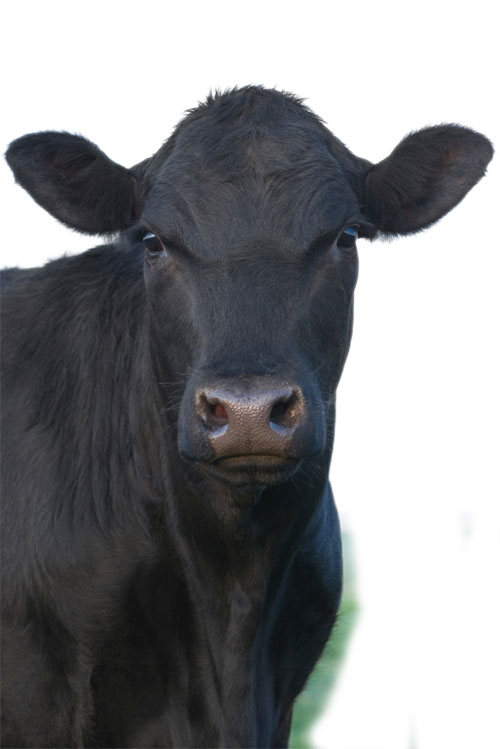 Angus cattle breeders were hit with frightening news twice over the past year when researchers separately discovered two genetic mutations in the breed that cause calves to be born dead. But DNA testing also giveth what it taketh away.
Angus cattle breeders were hit with frightening news twice over the past year when researchers separately discovered two genetic mutations in the breed that cause calves to be born dead. But DNA testing also giveth what it taketh away.
 Angus cattle breeders were hit with frightening news twice over the past year when researchers separately discovered two genetic mutations in the breed that cause calves to be born dead. But DNA testing also giveth what it taketh away: Last month, Pfizer Animal Genetics announced a DNA test for one of the genes that can cause calves to be born with an astonishingly swollen cranium but no brain or spine. A test for the other gene, which can cause calves to be stillborn with twisted spines, was released in the fall.
Angus cattle breeders were hit with frightening news twice over the past year when researchers separately discovered two genetic mutations in the breed that cause calves to be born dead. But DNA testing also giveth what it taketh away: Last month, Pfizer Animal Genetics announced a DNA test for one of the genes that can cause calves to be born with an astonishingly swollen cranium but no brain or spine. A test for the other gene, which can cause calves to be stillborn with twisted spines, was released in the fall.
The release of the new test was highly anticipated by the state’s seedstock producers because it will identify animals that carry the defective genes. Seedstock producers selectively breed bulls and sell them to commercial cattlemen.
In the not-so-distant past, breeders would have had to test their animals for defects by mating the suspects and waiting to see which pairs produced mutated calves. Now they can send a hair sample to a lab for about $30.
The increasingly high-tech nature of the business is part of what makes seedstock producers more versatile than your average cowboy. Seedstock production is the glamorous end of the beef industry — in contrast to commercial producers, seedstock producers breed unique bulls that can be worth millions of dollars.
“I can’t say we’re the rock stars, but we get the whole thing started,” says Rob Thomas, who owns Thomas Angus Ranch in Baker County, the 12th-largest seedstock producer in the country with more than 1,000 cattle. “We’re the ones that produce the genetics and we’ve got to use more technology. It’s a little more intense.”
Seedstock producers affect everything from how fast the cattle grow to how the meat tastes. And within the seedstock industry, the Angus breed is king, registering more cattle than the next four most popular breeds combined.
The discovery of the lethal defects threw some Angus ranchers into a panic. The likelihood of a stillborn calf is tiny, but the mutations both came from a bull named GAR Precision 1680 — arguably the most popular bull in the breed. According to the American Angus Association, Precision had nearly 10,000 direct sons and daughters and many more carry his genes. The discovery of the mutations meant any cattle found to be carriers would be massively devalued, all because of defects that only killed a small number of cows. But the purge will strengthen the breed in spite of short-term losses, says Thomas.
“A decade ago, we would have to have thrown the full line away,” he says. “Now we can test the cattle and find out which ones are carriers and move on with cattle that are free of the gene.”
He’s even more optimistic about using DNA technology to identify desirable traits in bloodlines and predict things like growth rate.
“We can now take hair or blood samples from the animals at birth and know their genetic potential,” he says. “We have just propelled ourselves forward so far with this technology.”


